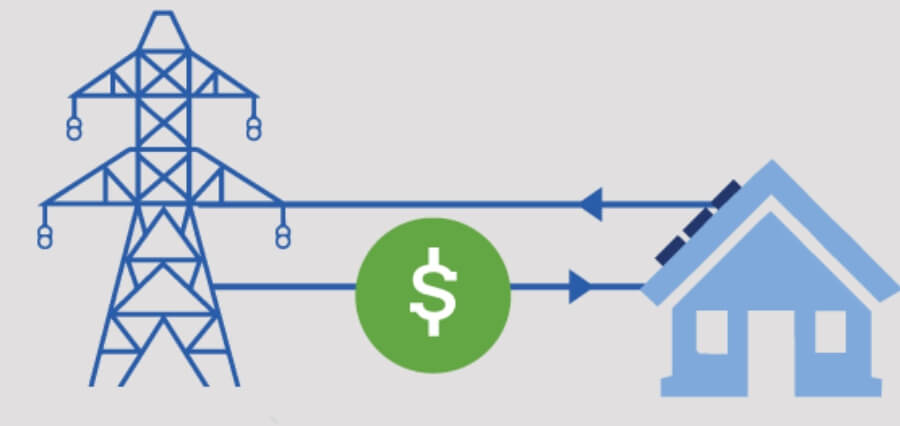Australia’s National Electricity Market follows an open grid model. Generation and distribution companies participate in the National electricity market and the Australian Energy Market Operator (AEMO), which oversees the operation. Australian consumers enjoy the freedom of selecting any electricity company that offers the best plans.
As a part of the energy policy, Australia aims to reduce emissions by encouraging consumers to opt for electricity generated by renewable energy sources like wind, sun, and hydro. Solar energy is popular in Australia, and recent data suggests the country has around 2.86 million solar PV installations as of June 2021. Electricity companies offer solar feed-in tariff to consumers who export solar PV systems to the national grid. If you have a solar PV system installed in your home, you need to compare energy rates and feed-in tariffs (FiT) in your locality before selecting an Electricity Company.
Understanding Feed-in Tariffs
There are two types of feed-in tariffs: net and gross.
- In net FiT, the surplus energy generated by your solar PV system is injected into the national grid. Your energy supplier will install metres to calculate the number of kWh exported to the national electric grid. After calculating export FiT, the energy supplier will give you energy credits adjusted against your energy bills.
- In gross FiT, you export all electricity generated to the national grid, and the energy supplier pays you a fixed Fit per kWh for the electricity exported.
Other Feed-in Tariffs
Besides net and gross FiT, energy companies also offer other types of solar feed-in tariffs like single-rate FiT and Time-Varying FiT.
- The energy supplier pays you a fixed feed-in tariff per kWh in single-rate FiT regardless of when the electricity is exported to the national grid.
- In Time-varying FiT, the time factor is an essential element to determine the FiT rate. For example, the day is broken into three time periods like shoulder, peak, and off-peak. Variable-rate consumers get the highest Fit when they export electricity to the national grid during the peak period, generally 3 pm to 9 pm weekdays. The peak FiT is higher than off-peak and shoulder periods when the electricity demand is low.
How to Compare Feed-in Tariff and Energy Rates?
Several websites allow you to compare feed-in tariffs and energy rates offered by different electricity companies providing service in your locality. All you need to do is type in your postcode, select the suburb you live, and fill in details like
- Home or business
- Solar PV installed or No Solar PV system
The website will display information about feed-in tariffs and energy rates of different service providers in your locality based on the data entered. Some energy rates comparison websites send the report in your email.
What to Look for?
When comparing feed-in tariffs, you need to look at minimum FiT and maximum FiT offered by each electricity generation company. Some energy companies offer higher maximum FiT if the consumer purchases solar systems from them. You need to also look for FiT for the first 5kWh. Some energy companies offer a higher FiT for the first 5KWh every day. For example, the company will pay you 11 cents per kWh for the first 5 kWh while six cents FiT after that.
To sum up, comparing feed-in tariffs and energy rates can help select the right energy company, resulting in lower energy bills and substantial savings.









